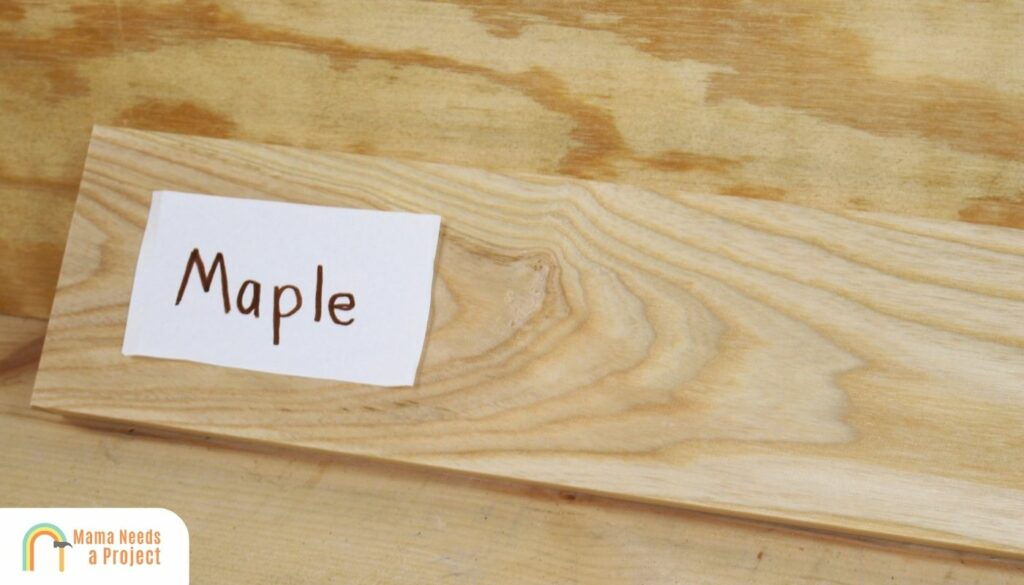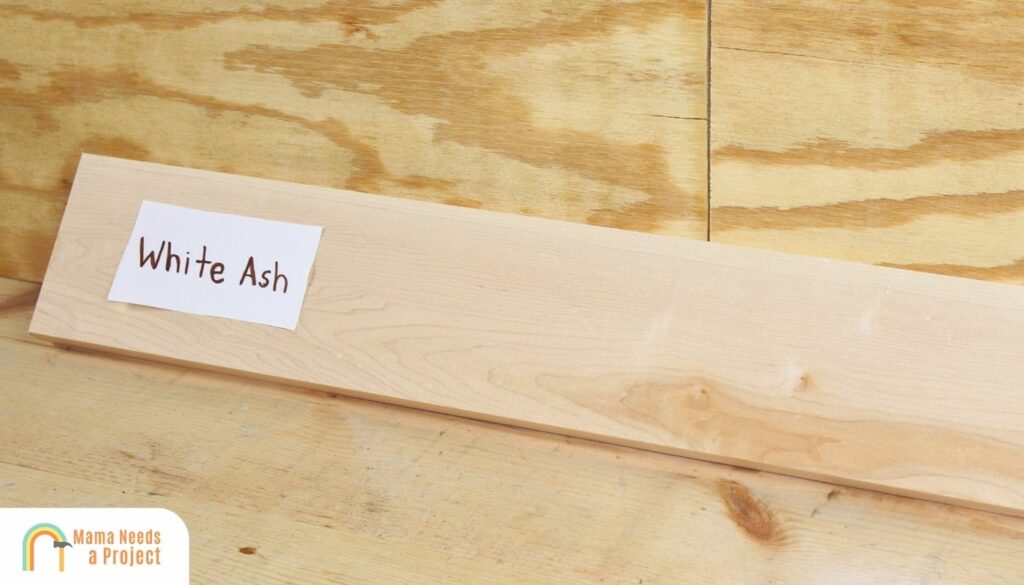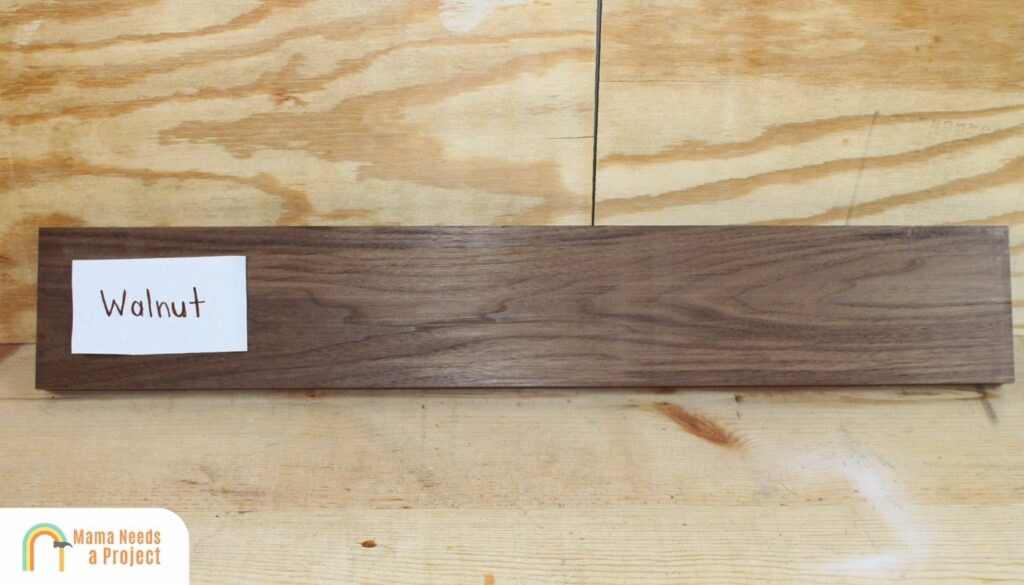Best Woods for Mallets (7 Best Options)
If you’re looking to make a wooden mallet, using the right type of wood is essential.
In the world of woodworking and carpentry, mallets are indispensable tools, utilized in everything from fine detailing to heavy-duty chiseling. But not all mallets are created equal, with the choice of wood playing a pivotal role in their effectiveness and lifespan.
In this post, I’ll take a look at the best wood for mallets so you can create a durable and effective mallet that will last for years. Let’s get started!
Best Woods for Mallets
1. Oak
Whether you’re making a big mallet or small mallet, Oak is a tremendous wood to use.

White oak, especially, is a preferred wood species for crafting wood mallets for a few reasons. This hardwood has an excellent reputation for its robustness and weight, allowing it to resist the ravages of time and the demands of heavy-duty tasks.
Don’t get me wrong, red oak is also a great option for making mallet heads with its beautiful appearance.
One of the key factors for selecting the best wood for mallets is density. A dense wood like oak ensures the mallet head doesn’t deform or crack under regular or even intensive use.
The grain structure of oak is another vital characteristic that makes it suitable for mallets.
The tight grain pattern signifies closely packed wood fibers, reducing the likelihood of splitting or cracking over time. This feature is highly advantageous for mallets, as they frequently undergo high-impact use. Oak’s endurance under pressure is why it is a favorite among many woodworkers for a variety of projects including desks and shelving.
Even with its hardness, working with oak isn’t significantly challenging.
You can shape and modify oak mallets fairly easily, tailoring the tool according to specific needs. This could involve forming the mallet head for superior strikes or adjusting the handle for a more comfortable grip. The workability of oak adds another point in its favor.
2. Maple

Maple is another terrific choice to construct your wooden mallet.
Specifically, hard maple species are often employed in the production of wooden mallets. Maple offers a harmonious combination of toughness and hardness, making it apt for a wide range of woodworking tasks.
Maple’s tight and uniform grain contributes significantly to its overall strength, resulting in higher resistance to wear and tear. This consistency in grain structure ensures that the wood doesn’t chip or crack easily, thereby adding to the lifespan of the mallet.
Maple, being a dense wood, is highly efficient at transferring force. This is particularly beneficial in tasks that necessitate a firm, precise impact, such as chiseling or carving. Whether you’re working with intricate designs or delicate materials, a maple mallet can provide the needed force without inflicting undesired damage.
Maple is also one of the best woods for carving spoons and many other projects because of its durability.
3. Ash

Ash wood offers a unique blend of strength and elasticity that sets it apart as a top choice for mallets. This light yet sturdy wood has excellent shock absorption capabilities, a critical aspect in preventing the force of impact from transferring back into the user’s hand, thereby reducing fatigue and the possibility of injury.
Ash’s elasticity makes it perfect for tasks requiring a lighter touch. In contrast to harder woods, it’s less likely to cause unnecessary damage to the work surfaces, making it a great choice for fine woodworking or upholstery work.
The straight, coarse grain of ash not only lends it a visually pleasing natural look but also enhances its resistance to splitting. This grain pattern, together with the inherent durability of ash, leads to a longer lifespan for the mallet. As a result, ash proves to be a cost-effective choice in the long run.
4. Hickory
Frequently lauded as the strongest North American wood, hickory is recognized for its toughness and resilience.
Hickory’s hardness assures a high level of impact resistance, making it the go-to choice for high-strength applications such as metalworking or rigorous carpentry tasks.
Hickory’s stiffness, though it may sound like a disadvantage, is actually a great benefit when it comes to mallets. This rigidity offers the user extra control during handling, minimizing the chances of slips or mis-hits. With its unmatched durability and resistance to wear, a hickory mallet is a long-term investment, reliably serving for many years, even under constant, heavy use.
5. Beech Wood
Beechwood, or beech wood, a common choice for making wood mallets, offers a unique mix of hardness, strength, and exceptional shock resistance. Beech’s hardness enables it to withstand repeated impacts without deforming, while its strength ensures it won’t easily crack or split.
Beech has a straight grain with a fine, even texture, making it easier to work with, whether it’s for shaping, carving, or finishing the mallet. This, along with the inherent durability of beech, extends the lifespan of the mallet.
Beech mallets are versatile tools, suitable for a range of tasks, including woodworking and carving.
Whether you’re delicately chiseling a piece of furniture or intricately carving a design, a beech mallet can deliver the required force without damaging the material.
6. Walnut

Particularly Black Walnut, holds a favored spot among woodworkers for several reasons. It strikes an optimal balance between strength and workability, making it a practical choice for mallets. While not as hard as oak or hickory, walnut still offers significant durability. This robustness ensures that the mallet will withstand regular use without deteriorating quickly.
One of the most prominent characteristics of walnut is its density. A dense wood is capable of absorbing shock well, which is an essential quality in a mallet. The shock-absorbing property of walnut protects the user’s wrist and arm from the recoil that happens when the mallet strikes a surface. This recoil can lead to fatigue and even injury over time, but a walnut mallet can help to prevent these issues.
Walnut wood is also known for its aesthetic appeal. It has a deep, dark color that is rich and warm, adding a touch of elegance to the tool. The grain of walnut wood is usually straight, which not only adds to its strength but also enhances its visual appeal. The beauty of walnut can turn a functional mallet into a statement piece in any tool collection.
7. Dogwood
Dogwood, a dense and durable wood, is a standout choice for mallets. Its high density ensures a solid, effective impact, making it suitable for high-impact tasks. Moreover, the shock-absorbing property of dogwood is excellent, which significantly reduces the effect of the strike on the user’s hand and wrist, thereby increasing the overall efficiency of the tool.
Dogwood mallets are favored for precision applications, where control is as important as force. They offer a balanced combination of density and shock-absorbing properties, which together provide excellent control. This is crucial for intricate tasks, such as detailed carvings, where a single mis-hit can lead to significant damage. In these applications, a dogwood mallet can be an invaluable tool.
Ready to make your wood mallet? Here’s a great video to guide you!
FAQs
What wood should a mallet be made of?
The choice of wood for a mallet depends on its intended use. Hardwoods like oak, hickory, and hard maple are excellent for high-impact tasks due to their strength and durability. Ash and beech offer great shock absorption, ideal for lighter tasks. Walnut and dogwood balance strength and shock absorption, making them versatile choices. Ultimately, the best wood for a mallet is one that suits your specific needs and preferences.
Should you use hardwoods or softwoods for a wooden mallet?
Hardwoods are generally the preferred choice for making wooden mallets due to their durability, strength, and ability to withstand repeated impacts.These woods have a dense grain structure that enables them to absorb the shock of hitting without splintering or deforming. Softwoods, on the other hand, are typically less dense and can deform more easily under heavy use. They might be suitable for light-duty mallets, but for most woodworking, carving, or chiseling tasks, a hardwood mallet is recommended.
Final Thoughts
So, what’s the best wood for a wood mallet?
There are plenty of great woods for making mallets, but some are better than others.
Each type of wood, from oak, maple, and hickory to ash, beech, walnut, and dogwood, offers unique characteristics, including strength, durability, shock absorption, and aesthetic appeal.
Choosing the right wood means understanding these properties and aligning them with your specific needs and preferences. In the end, you’re going to want to use a hardwood of some sort, whether you’re building a fairly thick wooden mallet or a smaller version.
Regardless of the choice, a well-crafted wooden mallet is a timeless tool, capable of delivering precision and power in equal measure, an indispensable addition to any toolkit.

